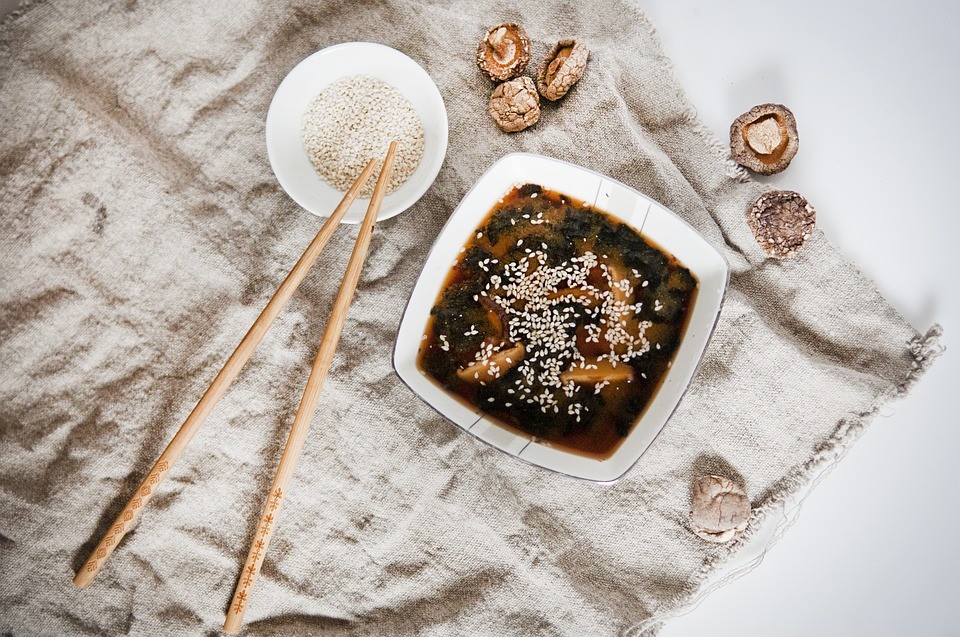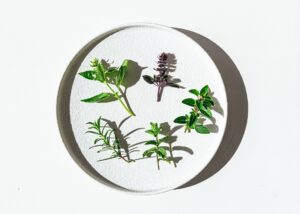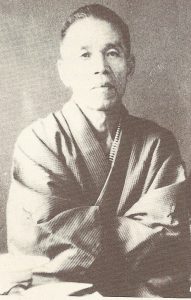The first forerunners of today’s miso can be traced back to around 500 BC. At that time, a fermented paste from soybeans was made in China, which was called Chiang (pronounced: “Dschang”).
From China, miso was brought to Japan by Buddhist monks around the 7th century, where its production was further developed through the addition of grain (barley and / or rice) and the refinement of the processing to the present day miso. Over the centuries, very different types of miso (which are often named after the name of the province) have developed in the individual provinces of Japan.
Each province has its own climate, which is reflected in the composition and taste of the miso as it ripens.
Natural miso reached Europe and America in the early 1960s
0-Sensei Yukikazu “Nyoiti” Sakurazawa (Georges Ohsawa), who has made a great contribution to spreading this high-quality food.
Today, the miso on the market is divided into so-called “modern” and “traditional” miso. Modern miso is usually produced industrially, matured in artificially temperature-controlled containers, and sometimes mixed with synthetic substances such as bleach, sweeteners, food colors, or glutamic acid, as well as the preservatives ethyl alcohol and sorbic acid. It is of course much cheaper than “real”, traditional, naturally produced miso, but it contains significantly fewer active ingredients such as enzymes, minerals and vitamins. It also usually tastes significantly worse.
Traditional miso is still made in harmony with nature and the seasons, largely by hand.
The Japanese soy paste miso has become more and more popular in the West, especially in the natural food sector, since the 1960s, and is now part of the standard of good nutrition in many places. If you are a vegetarian, it is particularly valuable for nutritional reasons. As a food component, miso offers something similar in a predominantly plant-based diet, what sauerkraut provides in Europe in a diet with a large proportion of animals:
A lactic acid fermented product, originally tailored to the needs of people from another culture and their diet. Due to today’s mixing of global eating habits, especially with a vegetarian lifestyle, miso is now known everywhere, and is even produced in the western industrialized countries.
In its diverse varieties and types, miso is roughly comparable to European beer: very different in quality, taste and production method. In Europe, after a few decades of getting to know each other, different types of miso are now being produced for the natural food trade. Many are not particularly good from a macrobiotic point of view, only a few are of good quality, which, however, still does not come close to that of the Japanese. The experience of Japanese miso production, which has been passed on for centuries and has grown from tradition, represents a unique wealth of experience that we, friends of the macrobiotic way of life, cannot point out enough. In any case, the quality of Japanese products ranks above the objections of some eco-critics that one can save the long transports from Japan and should consume the local miso. That’s only true if you don’t need the high quality miso that Japan offers. The European miso production is therefore not having an easy time of it in the current initial phase, but should be supported in the hope that the quality will improve over time.
And be careful: in Japan there are only a few really traditional manufacturers who offer high-quality natural food products.
In the European organic food trade, almost all Japanese miso come from these sources, but there are also differences in taste and quality. Some trading structures are also inspired by the spirit of finding particularly high-quality products in Japan. All these types of miso are sold under different brand names in the organic food trade. However, in the usual Asian grocery store in Europe, there is only miso that has been made using state-of-the-art methods and not the products we will talk about below.
In Japan, too, the influence of vegetarian Buddhism, the different climate and agricultural development, together with the local culture, transformed the ancient salt-pickled food into a new, peculiar and distinctive product: miso.
The most famous types of Japanese miso today are of the same type, texture, and sometimes even the same recipe for miso paste that has been widely used since the fourteenth century.
The three main types of miso are: Hatcho, Kome and Mugi.
Hatcho, made from whole soybeans, salt and a special koji (Aspergillus hatcho), is considered the top quality.
(But be careful: Hatcho-Miso is the miso with the highest salt content approx. 18%!).
The second variety – kome – is made from whole soybeans, white rice, salt and koji (Aspergillus oryzae).
Mugi, made from whole soybeans, barley, salt and koji (the same as above), is considered the rural diet, or a farmer’s food. In terms of quality, however, it is by no means inferior.
These three main species changed into many sub-types, depending on climatic fluctuations, local traditions and discoveries of manufacturing processes, which were kept secret because – as they are more or less still today – they were part of the cultural traditions and precious possessions of the family.
While in the old days almost every family made their own miso, around the sixteenth century with a new development in Japanese history – the shogunates, or the rise of the warrior class to power – commercial production began for the large households of the dictators and powerful feudal lords to supply.
Towards the end of the Second World War, the modernization trend – had already started about 80 years earlier at the time of the Meiji Restoration – influenced the fermentation methods of miso dramatically: old recipes were discarded, modern machinery introduced, and scientific advances adopted to speed up production and the Increase productivity, thus shortening the traditional, long period of remuneration. As a result, the rich and hearty miso taste changed into new aromas, more adapted to the new foods and the way of life, which was closer to western civilization. Not all miso manufacturers, however, turned to the new fashionable foods. Some of them kept their traditional recipes, ancient methods, and even the necessary ancient wooden tools and implements.
A large part of today’s miso can therefore be regarded as similar to or derived from traditional products, but the processing methods are no longer the old ones.
Manufacturing:
The traditional production of miso is an elaborate process that depends largely on the intuition and experience of the miso master. The actual workflow shown below varies in time, temperature and composition of ingredients from variety to variety. It can only serve as a rough guide!
Process for the production of traditional miso (as an example rice / Genmai miso):
Rice (whole grain) is washed, soaked for about 12-16 hours and steamed for about 1 hour. Then it is inoculated with a starter (koji ferment / aspergillus oryzae) and “fermented” for between 40 and 50 hours in a warm place.
The dried soybeans are washed and soaked in water for about 12-16 hours. They are then boiled (in fresh water) and cooled to around 30 ° C. The soybeans and rice are now mixed together with salt and filled into large barrels. These are then covered (not airtight!) And weighted down with massive stones. The ingredients mature into fresh miso over 6-18 months (sometimes longer), mostly in large barn-like halls. During the ripening period they are ideally subject to the temperature fluctuations of the seasons and thus reflect to a certain extent the climate of the respective province of origin.
The use of soybean meal instead of whole soybeans is the most common modern practice, adopted in order to get a cheaper product (soybean meal is a by-product of soybean oil extraction, which requires chemical substances to produce a cheap and quickly produced food). Temperature control to speed up the aging process, coloring, chemical additives, sugar or burnt sugar, modern equipment and chemical processing technology are now part of the miso industry. The current trend is therefore directed towards productivity and profit, eliminating the special miso qualities as a holistic food, completely fermented and remunerated by a completely natural fermentation.
Indeed, the basic qualities of miso are produced through a long and slow fermentation and aging process. The fermentation is perfected step by step in the payment period, but begins exactly after the carefully prepared ingredients have been mixed together. The traditional production methods involve cooking the grain – rice or barley – with steam and then “inoculating” it with molds (or koji seeds) of the genus Aspergillus oryzae (in the case of Hatcho-Miso, only whole soybeans and a special mold are used, Called Aspergillus hatcho – see the section on Hatcho Miso. For a certain period of time, which varies between two and three days depending on the climate and the type of mold selected, the cooked grain is allowed to rest in a special room, the koji room, in order to allow the growth of fine and elastic hair-like fibers, the mycelium, which holds the grains together and gives off a fine, peculiar odor, similar to that of natural yeast. At this point, other ingredients, namely cooked soybeans, salt, and a small amount of water are mixed together with the grain koji. Depending on the recipe or type of miso, the proportions of the ingredients vary considerably.
The mixture of soybeans, grain koji, salt and water, stored in large cedar wood barrels and pressed down through a wooden lid weighted with stones, now slowly begins to ferment.
The mold causes enzymes to be released, and these in turn stimulate the fermentation process, which is responsible for breaking down starches into simple sugars, protein into amino acids and just as many other biological processes, ultimately producing the fine product that have enjoyed all of you at least once.
We can say that almost every region in Japan has at least one particular mold culture or species, selected after many years of experimentation and study, and carefully preserved and “cared for”. For this simple reason, the same type of miso with its special taste, its special texture in terms of aroma, color and saltiness is different in every region. Of all these regional products, only a few achieve top quality. The choice of organic food exporters has thus been limited to a few species of miso, many of which are of the highest excellence in Japan today. The rural production style is particularly important for high miso quality; instead of stainless steel containers just wooden tubs, instead of antiseptic food cleanliness just the natural elements etc. Only in the rural production method, for example, such nutrients as vitamin B12 and others develop, one reason why one repeatedly hears contradicting test results regarding the B12 detection in miso. To put it more drastically: B12 lives in the dirt! A fact that your child already knew when he happily stuffed earth into his mouth. But this vitamin is only one factor in the wonderful nutritional offerings of traditionally made miso, and shouldn’t be overstated.
The enzyme digestion process takes a certain number of months to complete. 18-24 months is the normal compensation period in which the breakdown of complex soybeans / grain molecules is almost complete. During this compensation period, only climatic changes are the main control factor, which aids fermentation in summer or hinders fermentation in winter, while human intervention is limited to sometimes pushing the mixture back and forth by hand to introduce the oxygen into it. When the paste has reached the optimum in color and aroma, its saltiness is completely reduced and accordingly imperceptible. Miso paste is packaged in bags, small barrels or cans and sold that way, or else it is, the pressing stones are removed, left untouched and waited to be sold.
According to international customs regulations on imported goods, miso must be pasteurized when it is shipped abroad in pre-packaged form, in order to avoid further fermentation and eventual explosion of the packaging; In contrast, loose miso does not need to be pasteurized. However, this pasteurization is very easy and only slows down the growth of bacteria and enzymes. However, those who prefer the absolutely living product should use miso in 4 kg bags, or 10 or 20 kg buckets. European wholesalers now also pack loose miso and offer it unpasteurized in jars, for example.
The versatility of miso gives every style of cooking the greatest possible variety. When added to hot broth or soup base in various proportions and combinations, almost all types of vegetables, soups and sauces have a special flavor. As it is, or mixed with sesame paste or nut butter, peanuts, walnuts, almonds, it makes a tasty and nutritious spread and makes the oils and proteins of the paste more digestible. It can be used as a main and sole curing agent to prepare tasty and delicious pickles, such as daikon or radish, carrots and beetroot, and even fish or hard-boiled eggs, and then enjoy them in winter.
As a seasoning and garnish for vegetables and / or fried fish, miso enhances their taste and helps to prepare successful dishes with little effort. Usually miso does not need to be boiled for a long time (better not really cook it, just simmer “nume la zieh”). “Cooked” on a very small flame for a few minutes, its color, aroma and taste permeates vegetables and grains, making them more appetizing and easier to digest.
Miso can also be used without further treatment, or it can be easily and quickly roasted and mixed with sake (rice wine) or other alcoholic beverages on special occasions.
Brat miso is made from a teaspoon of natural sesame oil and a teaspoon of miso, fried together for a few minutes, until the oil is completely absorbed and the miso begins to look a little drier than usual.
But miso can also be “simmered” for a long time, for example in Koi-Koku (special carp soup), Tekka and other recipes. In these cases, long “cooking”, along with special techniques and selected vegetables, creates dishes that have traditionally been considered medicinal food; helpful in restoring blood quality and vitality, strengthening internal organs, and stimulating the functions of the body and metabolism in times of illness, as well as restoring natural balance and resilience, and accelerating recovery. As the main food in early Japan, miso played a fundamental role in times of need or war, namely to prevent starvation and the weakening of the people and warriors; it was also valued as a source of long-lasting energy for heavy workers.
It is interesting to note that the saltiness of this product softens over time, penetrates deeper into grain and bean cells, making them more easily absorbable. While fortunately it provides the human body with the required amount of daily vital salt in connection with oils, proteins and carbohydrates, miso salt makes it easy to digest and does not develop thirst or imbalances in a well-proportioned and healthy diet. In addition to all of this, it must be said that the activity of the enzymes has a beneficial effect on our bacterial and intestinal flora, promoting health, vitality and resistance to infectious diseases.
Because of all the qualities and peculiarities explained above, Miso was invented in Japan by Dr. Ishizuka, the early proponent of the natural way of life and healing of diseases, which later became known as macrobiotics, and whose teachings were inherited from Georges Ohsawa, is regarded as the basis for a healthy diet.
Along with Georges Ohsawa’s teachings, all of his students spread the use of miso and deepened the study of its particular characteristics and quirks. All of today’s leading macrobiotic teachers such as Michio Kushi, Herman Aihara, Clim Yoshimi and many others – emphasized the beneficial properties of daily miso soup, and the excellence of natural cooking based on the use of miso as one of the ingredients.
The goal of macrobiotic food has always been to select the best miso available to meet the ever growing need for a natural, nutritious and healthy food demanded by such illustrious teachers and naturopaths.
Choosing a good quality miso today requires patience, careful study, and an in-depth knowledge of traditional manufacturing methods, along with a clear and up-to-date knowledge of modern technologies, which are often completely removed from the standpoint of natural life.
Soybean powder, hydrogen chloride, burnt sugar, chemical preservatives (most commonly ethyl alcohol) and flavorings, contaminated or chemically manipulated or “purified” water must be excluded from the constituents of a natural miso. Technical innovations, such as temperature-controlled storage rooms, prevent the natural development of fermentation by shortening the aging period so that a modern miso goes through an artificially generated four-season cycle in just six months, or even less.
A real, complete fermentation produces a food that is almost completely dissolved into its main components, ready to be used well by our body system: the growth of enzymes and beneficial bacteria, naturally controlled by the salt content, gives it Miso its particularly precious properties of restoring our living intestinal organisms, while the appropriate balance between fat, protein, starches and minerals is perfected through vitamin activity and catalysis.
All modern, imitation misos have nothing more to offer than an artificial taste, chemical colors and fashionable textures, but also biological death. Often times, the line between a natural product and a commercial product is very narrow and difficult to draw.
The main miso varieties:
Soybean Miso (Hatcho Miso)
Although attempts have been made to recreate the true hatcho miso and the name is occasionally misused, there are only two manufacturers, both on the same block in the small town of Ozaki, near Nagoya, and both with centuries of heritage.
One of them is the most famous miso brewery in all of Japan, and holds the prestigious position of being the supplier to the Japanese emperor, who is said to enjoy miso soup with hatcho miso every day. This product is undoubtedly at the peak of miso quality.
Hatcho miso is only made from soybeans, which means that no other grain product is used in the production of koji, which is made from a very special mold called Aspergillus hatcho, which is said to only thrive in the city of Ozaki. Imitators who use the normal “Aspergillus oryzae” cannot hope to match the flawless qualities of the real hatcho miso. Once the koji has been obtained, it is mixed with salt and water, both in lower proportions than is normally the case in miso production. The resulting mass is then poured into large cedar barrels, each containing over 6 tons of miso. A wooden lid is placed directly on the miso, and the lid in turn is weighted down with large stones; the weight of the stones equals the 6 tons of miso in the barrels. The tremendous pressure that is put on the fermenting miso plays a major role in obtaining the appropriate Hatcho miso quality. Only natural temperatures affect fermenting miso, which is allowed to age for at least 24 months before being put on the market.
Soybean Miso (Mame Miso)
Like the Hatcho miso products, soybean miso is made from only soybeans, but the mold vaccine is different and the miso ferments without the extraordinary pressure used to make Hatcho miso. Mame miso is fermented using naturally prevailing temperatures and is one year old.
Barley Miso (Mugi Miso)
Barley miso, once the most common type of miso in Japan, is becoming increasingly rare due to the preference for younger, sweeter types of miso made with rice, less salt and less time. It is traditionally aged for at least 18 months. There are also younger versions of this, which are characterized by their light color and mild taste and are an ideal miso to consume, especially in spring / summer.
Brown rice miso (Genmai miso)
Brown rice miso is a relatively recent invention from Japan, as it did not exist there, at least in the last few centuries (rice was always more or less polished and peeled, which then resulted in kome miso, which was made from white rice). Brown rice miso was specially developed for the external natural food market. A master brewer from Sendai Co. was the first to invent it, and it is now made by several traditional manufacturers.
The basic problem with making miso from brown rice is: how do you get the mold germ cell to develop on the starch and protein culture medium; it took Mr. Haga two and a half years to succeed. In normal rice koji or barley koji, there are no layers of bran that keep the mold cells from interacting with the inner parts of the grain; this interaction necessarily allows enzymes to dissolve the protein, starch and lipid molecules of rice and soybeans. To solve the problem of the bran layer, the brown rice is run through a dishwasher in Sendai, which only scratches the tip of the ridges that run along the length of the grain. 20% of the kernel remains untouched and less than 1% of the rice weight is only lost on the surface through this scratching, which is sufficient to allow the mold germs to penetrate the grain. Because only 80% of the rice becomes koji, a higher percentage of rice was chosen as soybeans (50% brown rice and 50% soybeans): The taste is therefore sweeter, which comes from the abundance of natural grain sugar.
Like the Sendai Kome miso, the miso made from brown rice ferments for two summers (at least 18 months) in cedar barrels at the prevailing temperatures of the cool Tohoku region.
Natto miso
This is not a miso for use in soups; rather, it is used as a condiment and eaten with other foods. Along with barley koji, ginger, kombu, and barley malt are used in the making to create a condiment that is delicious when eaten with rice. Since the barley malt makes up 30% of the weight, the aroma is very sweet and this helps to accelerate fermentation. Natto miso usually ferments for about 2 months and is kept warm during the cooler seasons to ensure continued fermentation.
Shiro miso (we don’t use this type of miso because too yin for miso)
A light rice iso, briefly fermented, the sweetest miso ever, has the lowest salt content, very light taste, suitable for light summer soups and sauces, even goes well with sweet dishes, puddings, cakes, etc.
Buckwheat miso
A strong, protein-rich miso with buckwheat. Suitable for winter nutrition for physically hard-working people.
Akadashi miso
A mix of hatcho and shiro miso. Combines the healing energetic properties of the highest energy Hatcho-Miso with the lighter, sweet taste of Shiro-Miso and has been offered in Europe since the 90s to people with poor health and susceptible people who can no longer tolerate Hatcho-Miso due to its strong nature to provide a milder, more tolerable variant. Macrobiotic consultants report very good experiences, especially in today’s world, which is characterized by general decline in health and allergic reactions.







